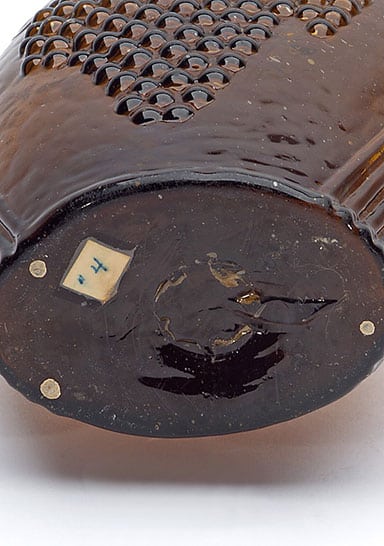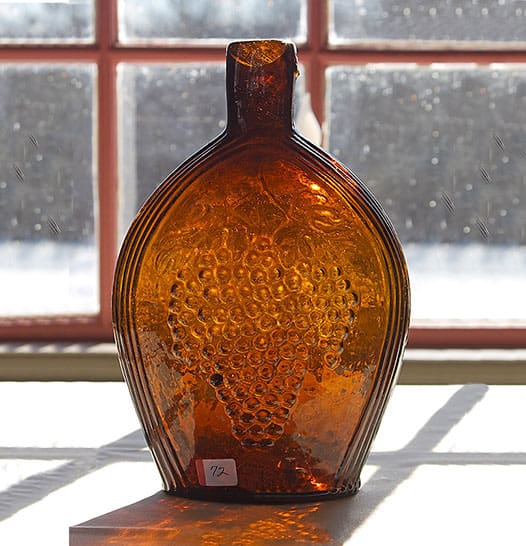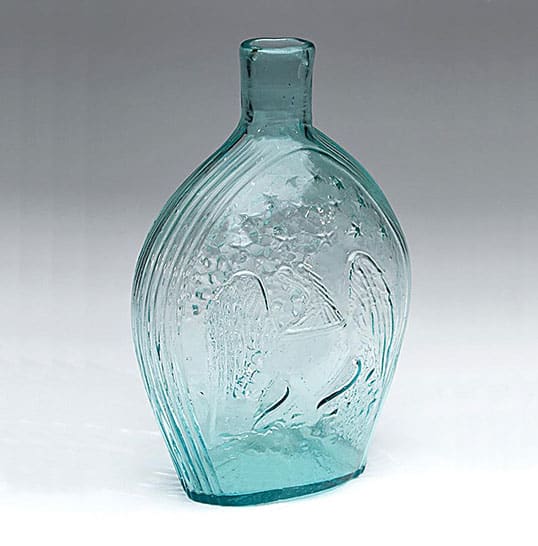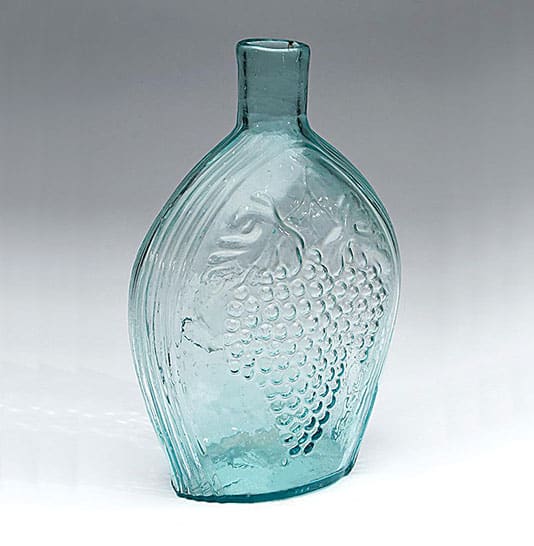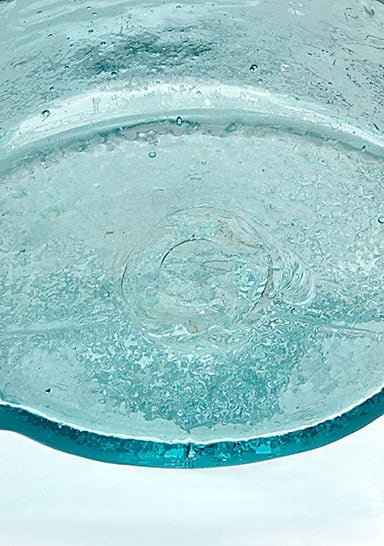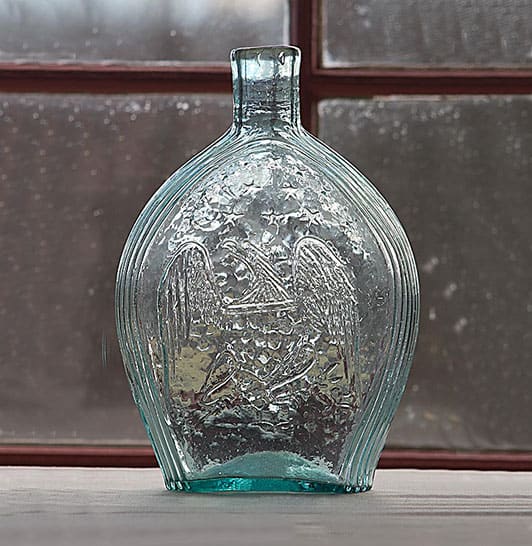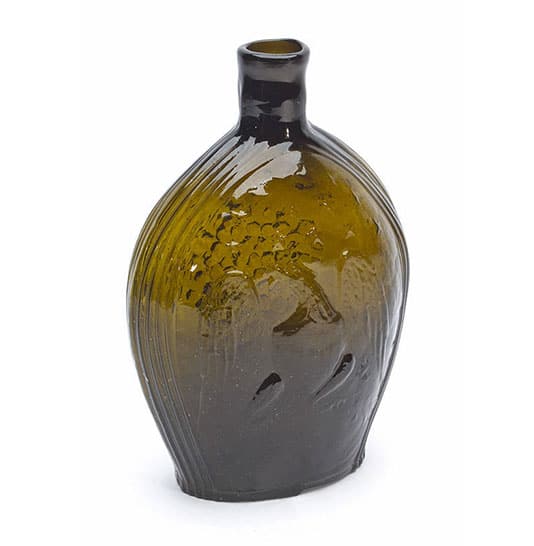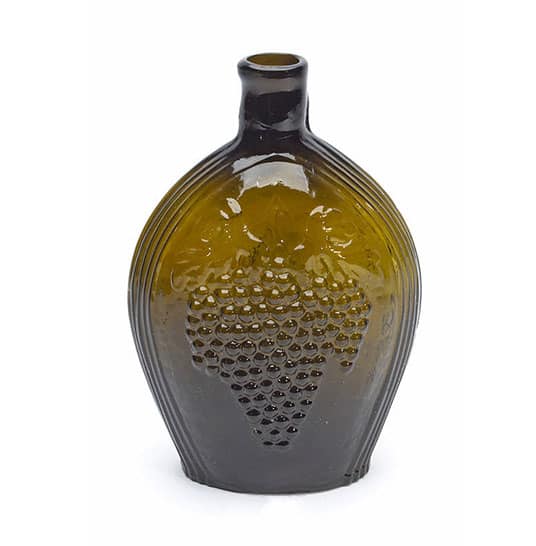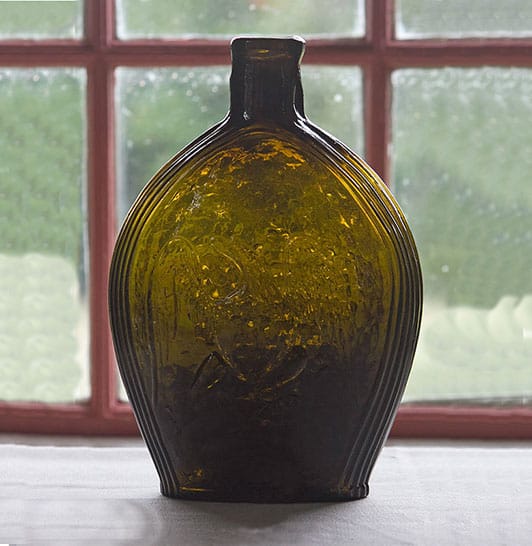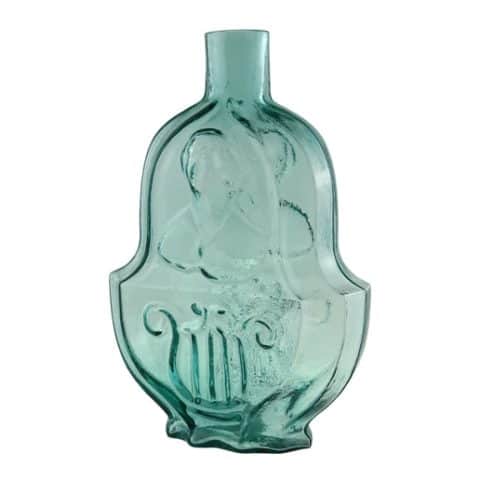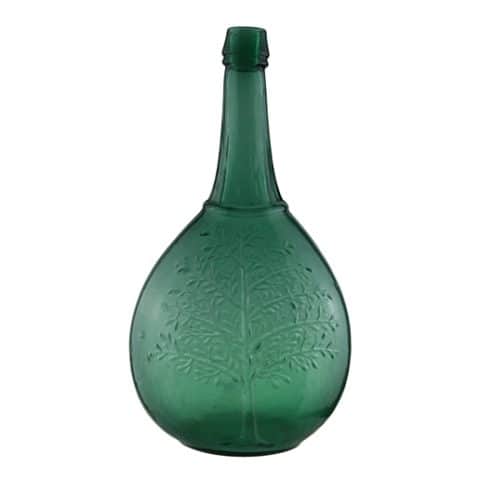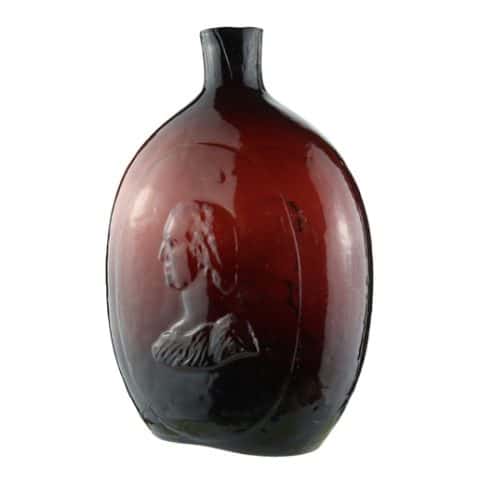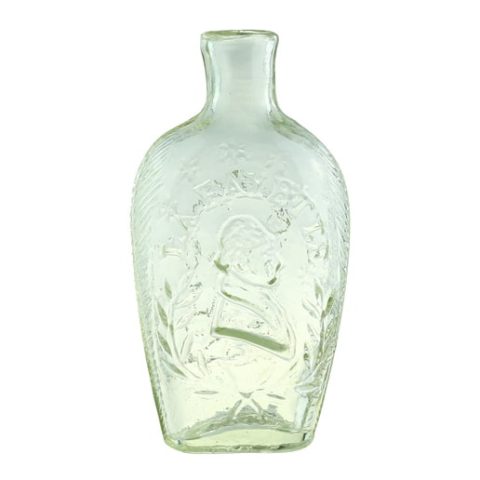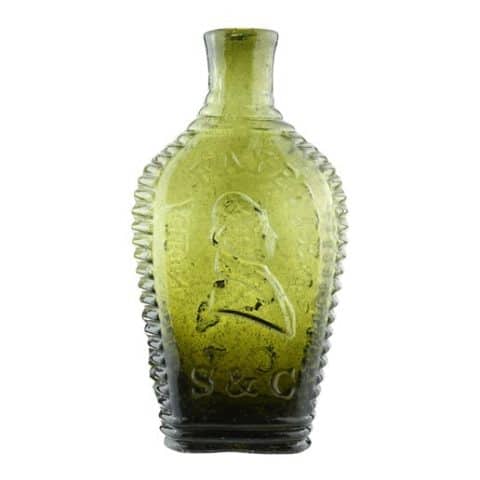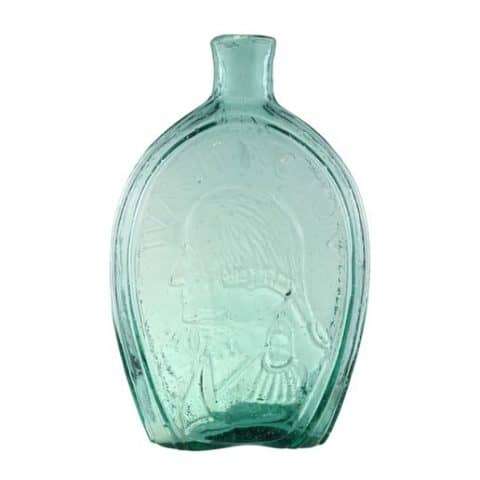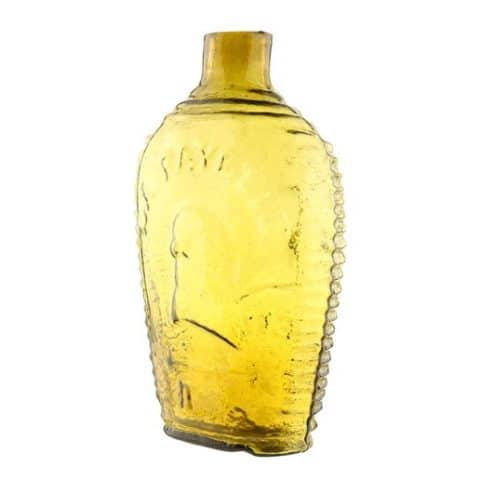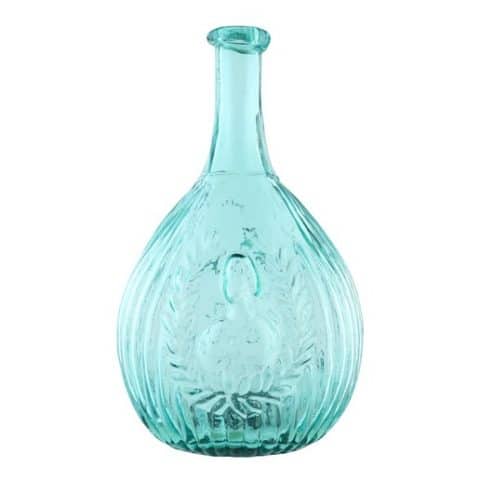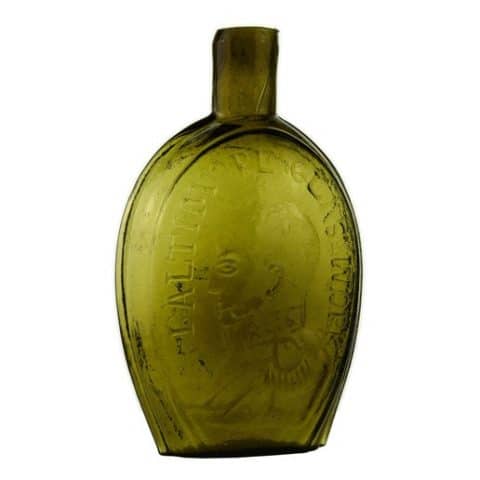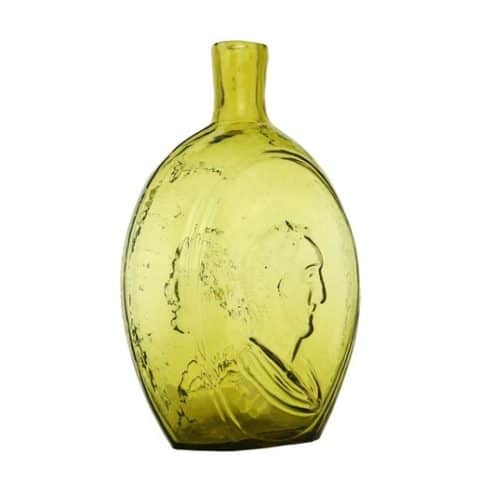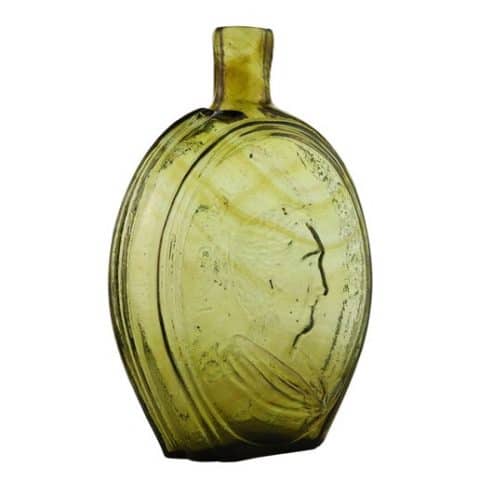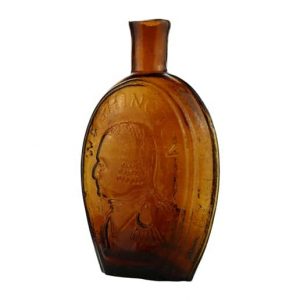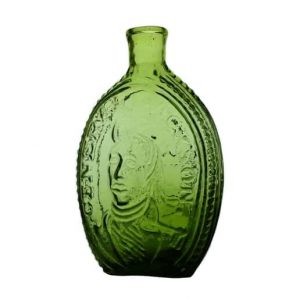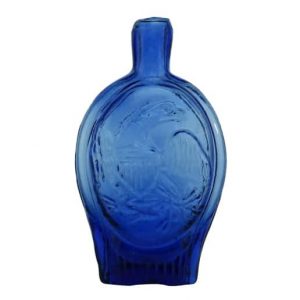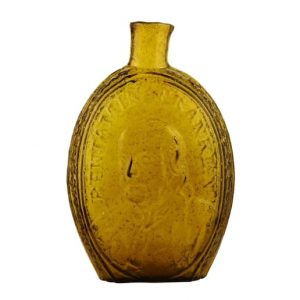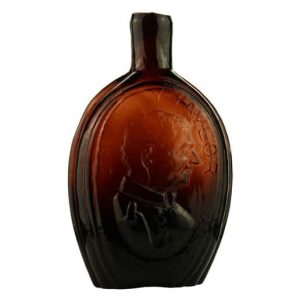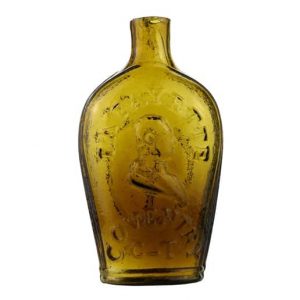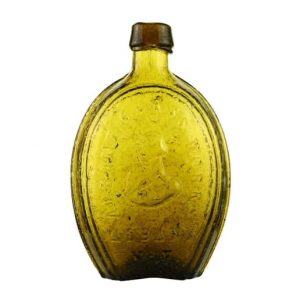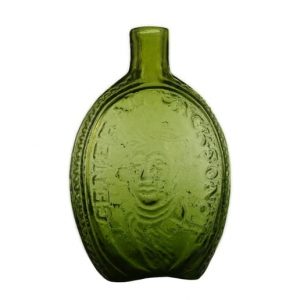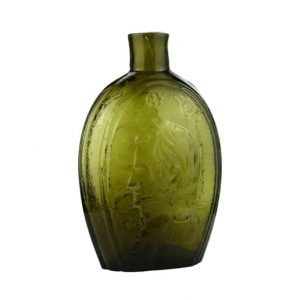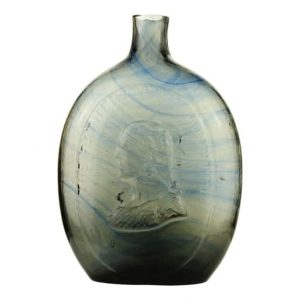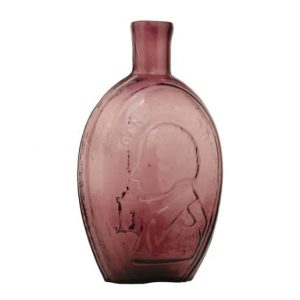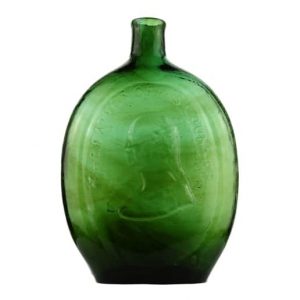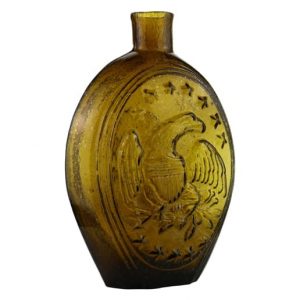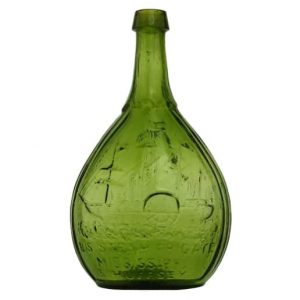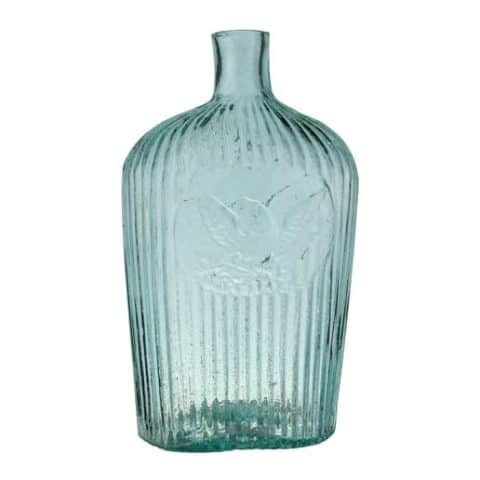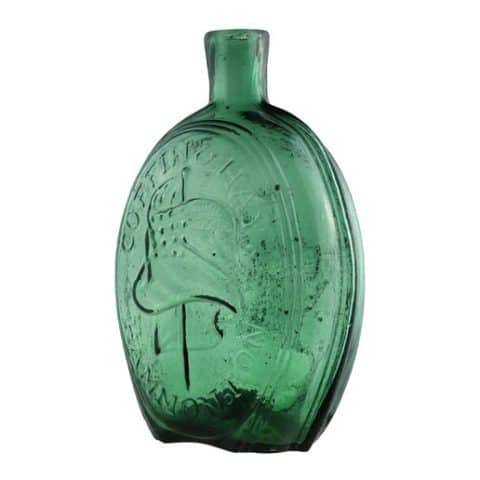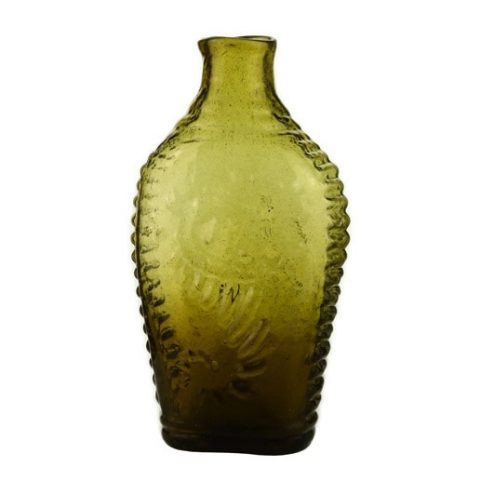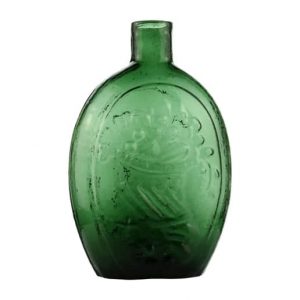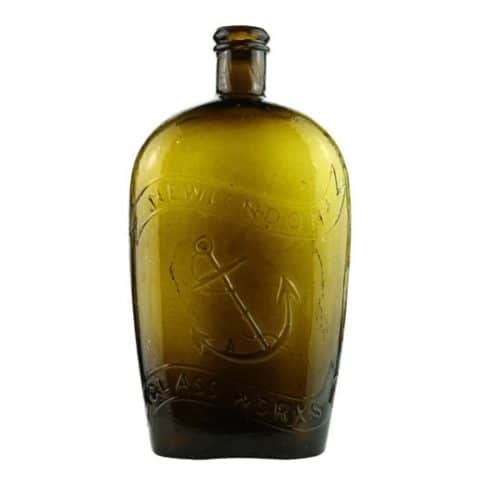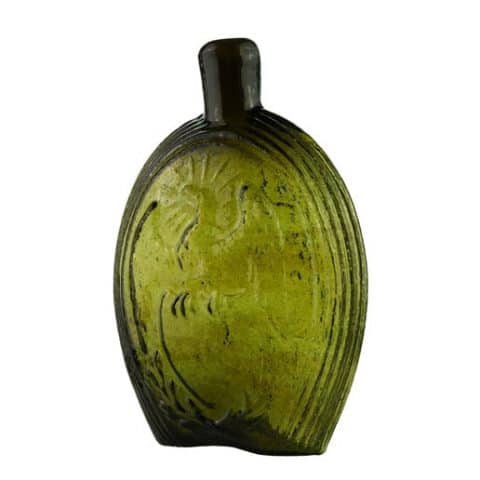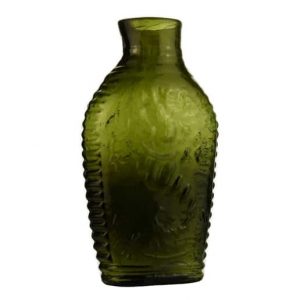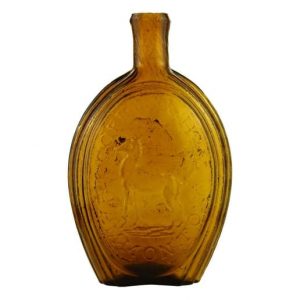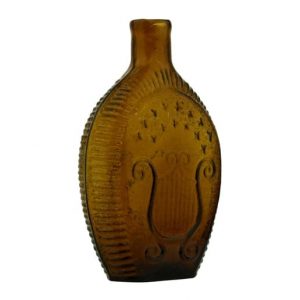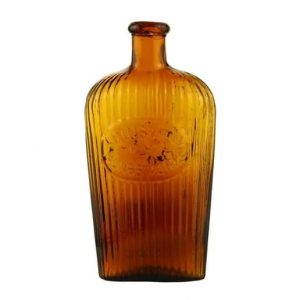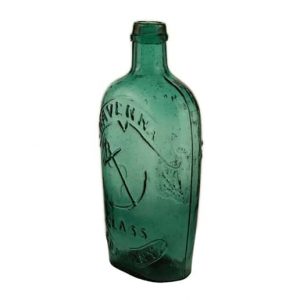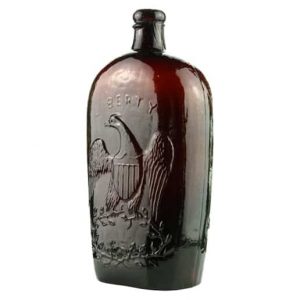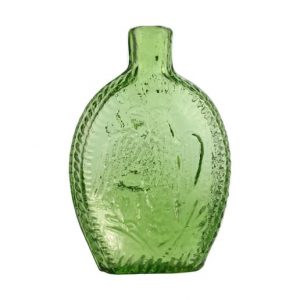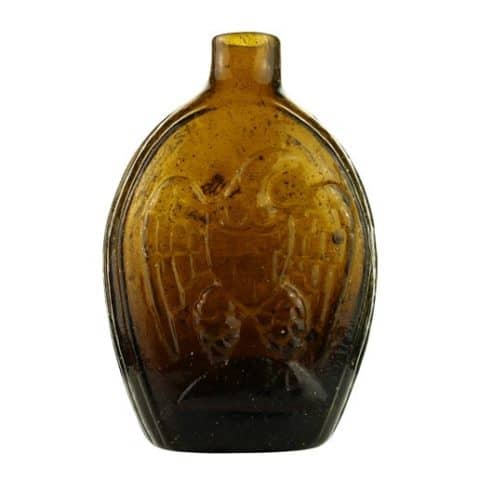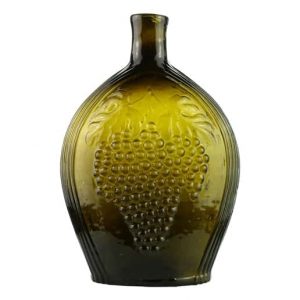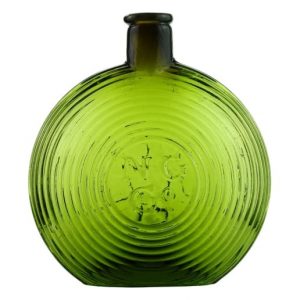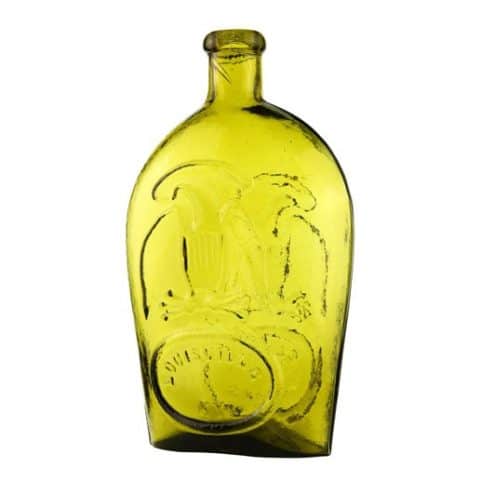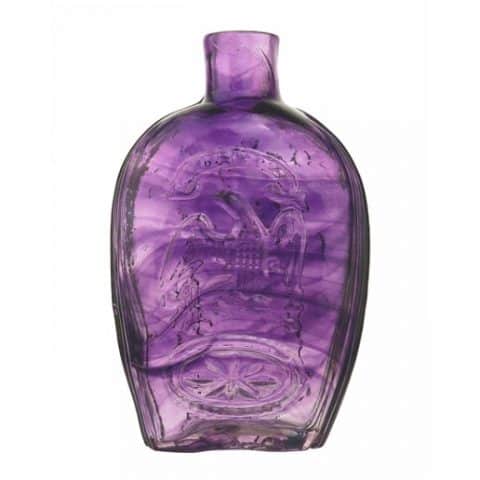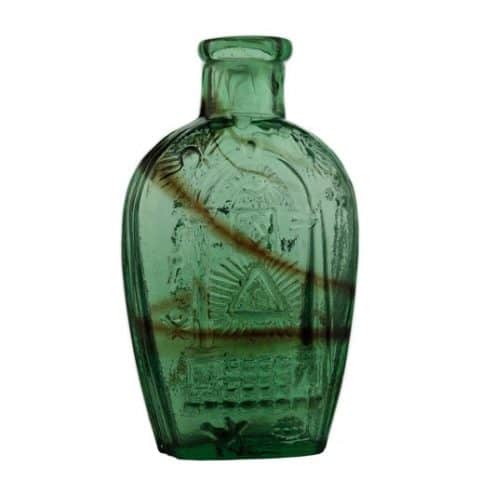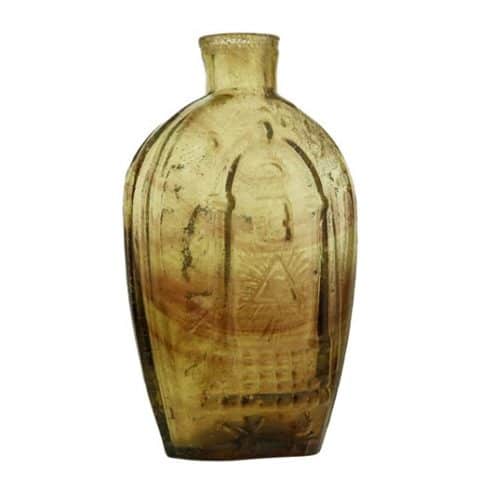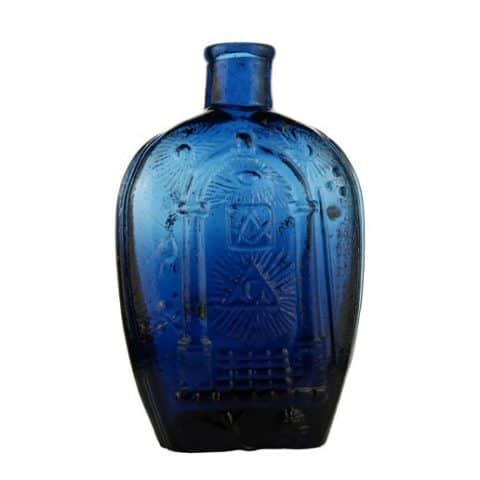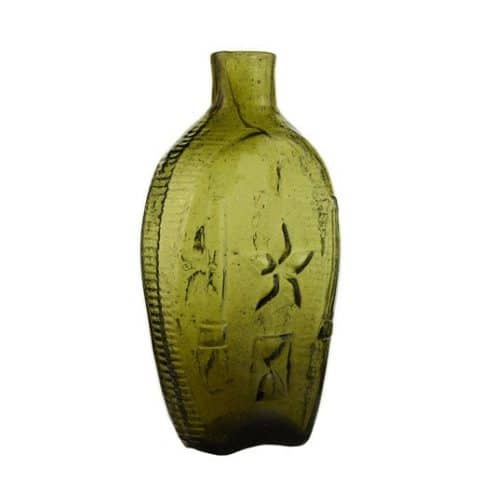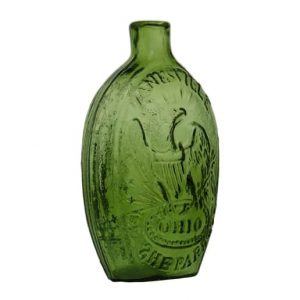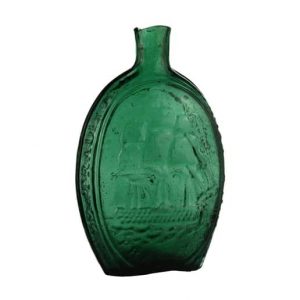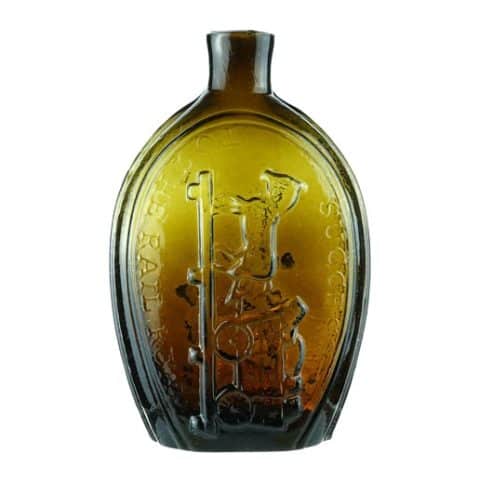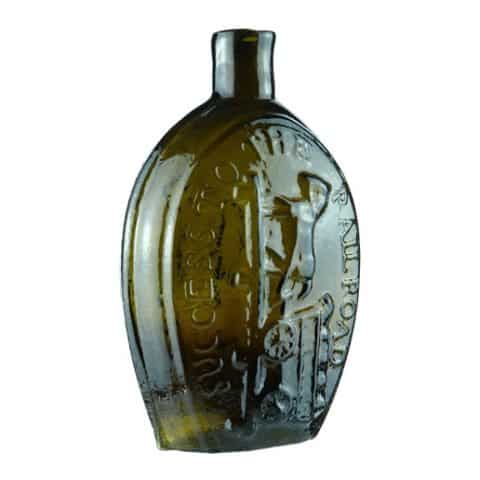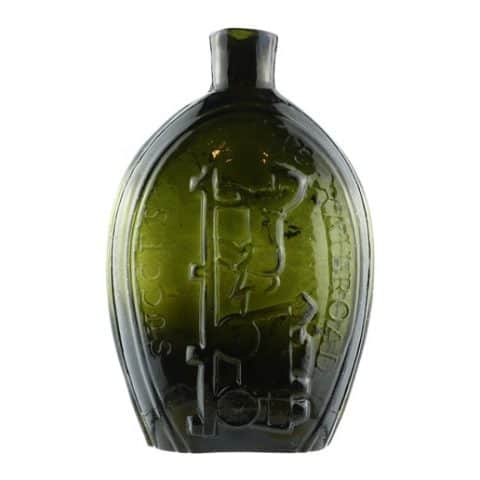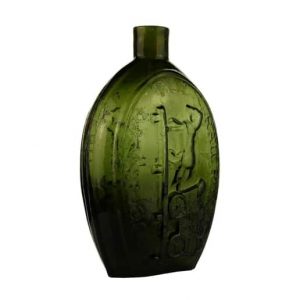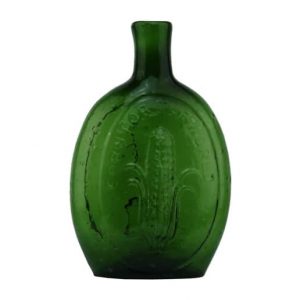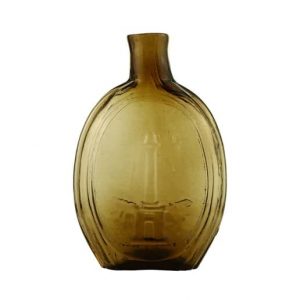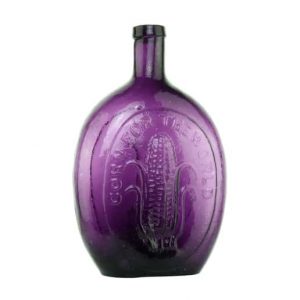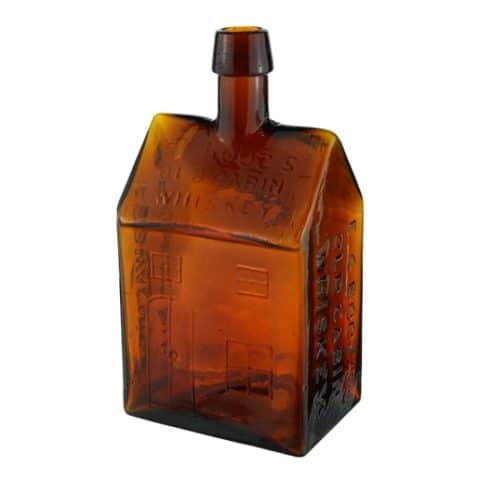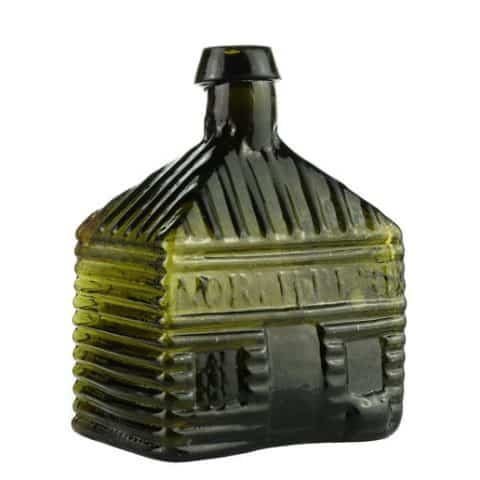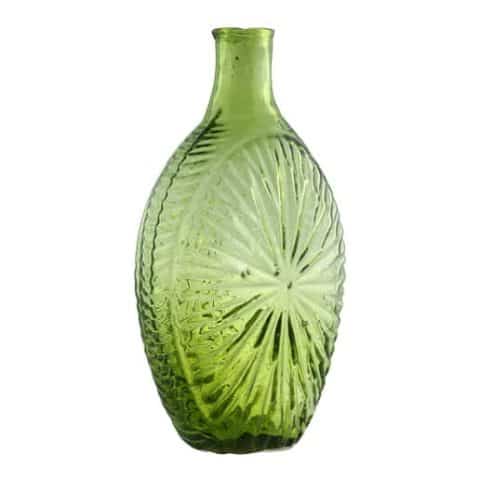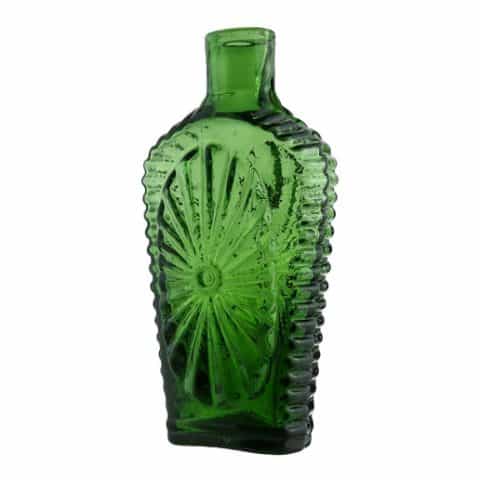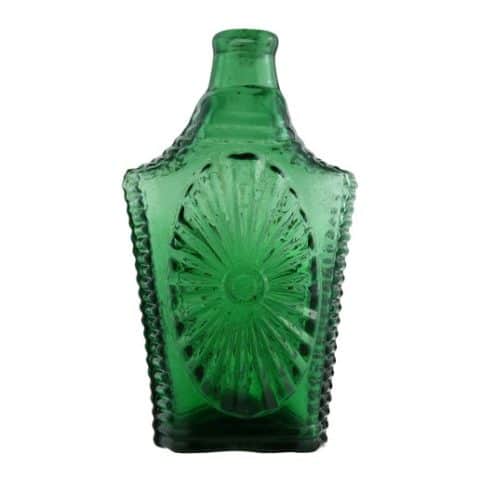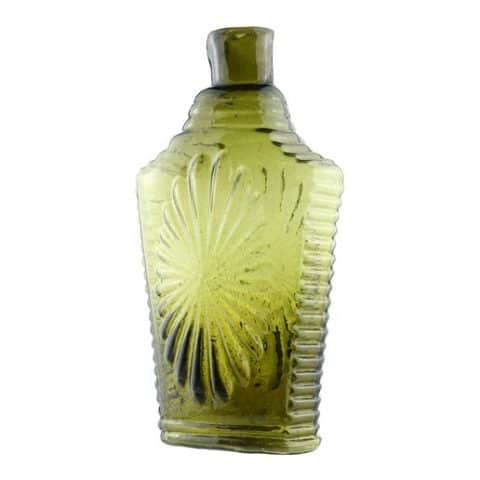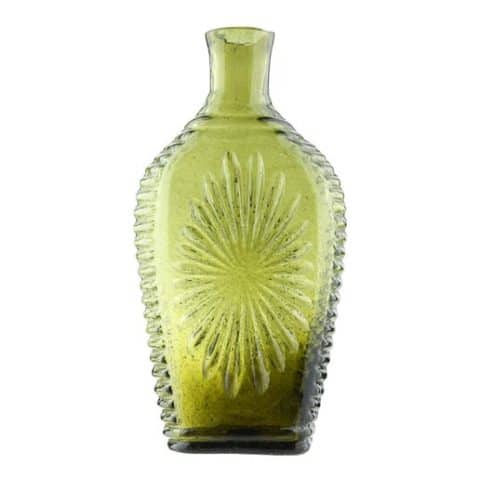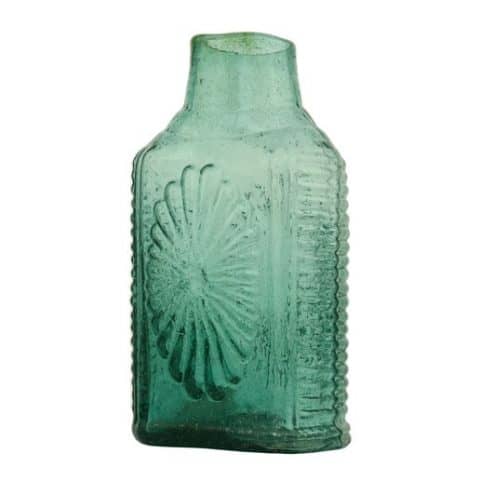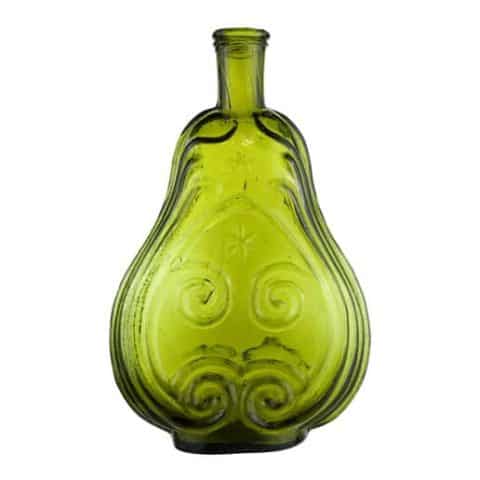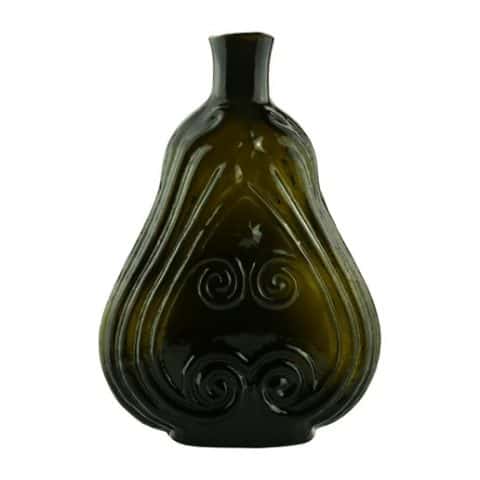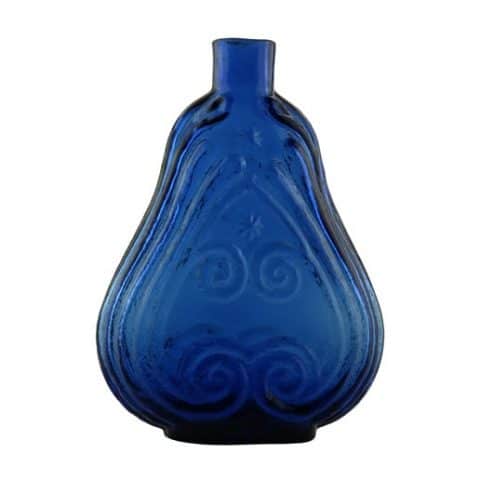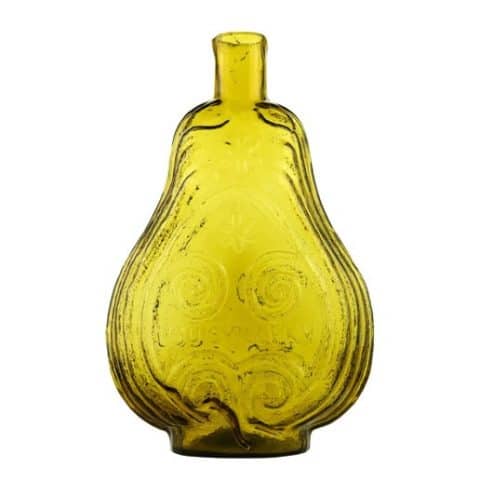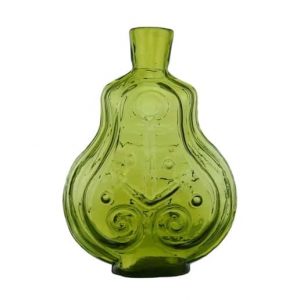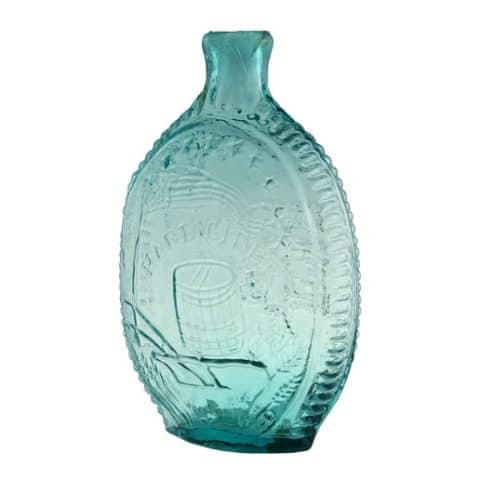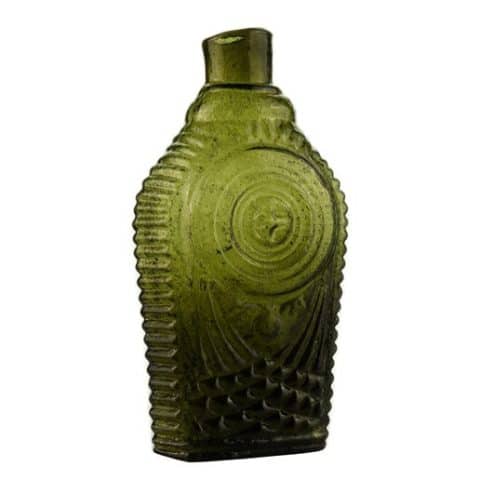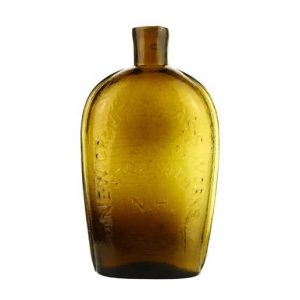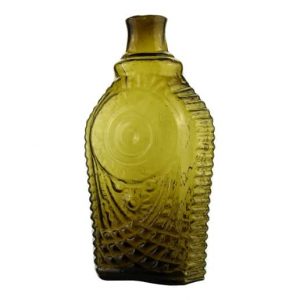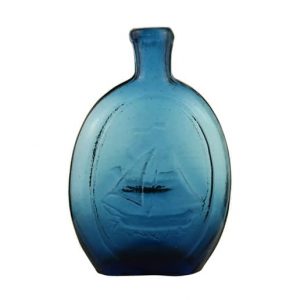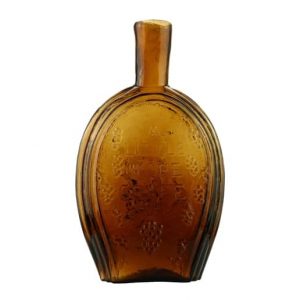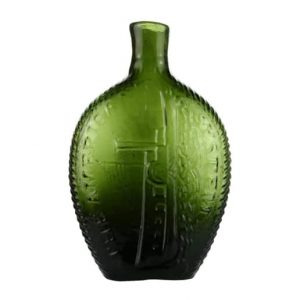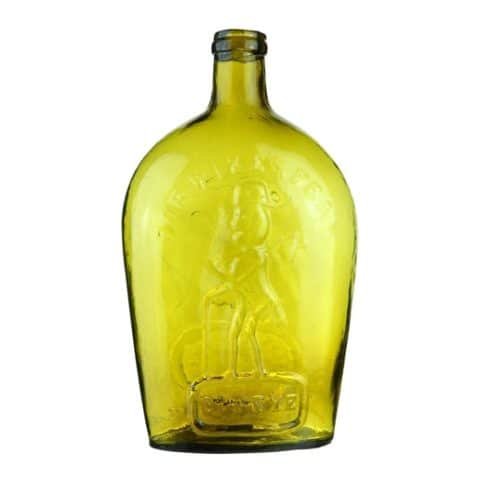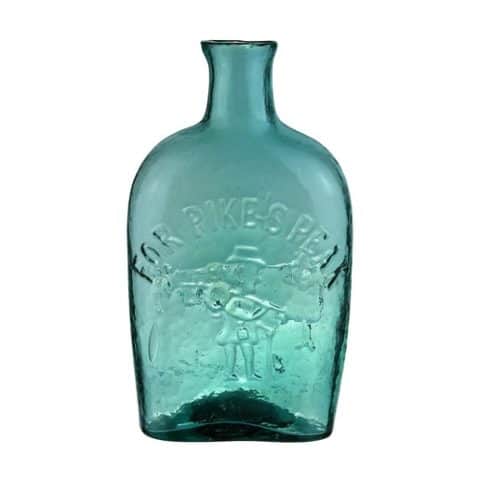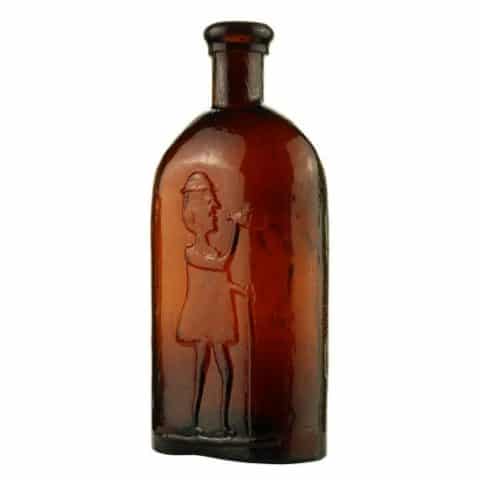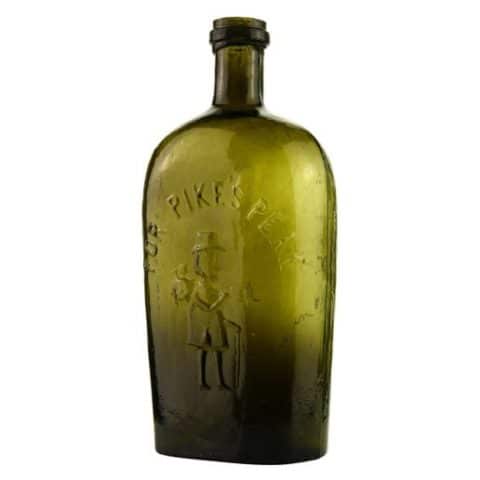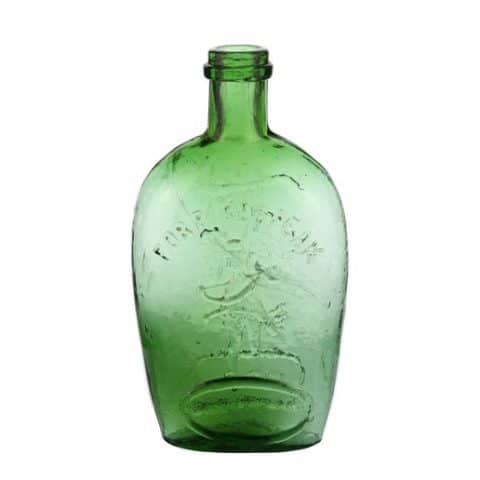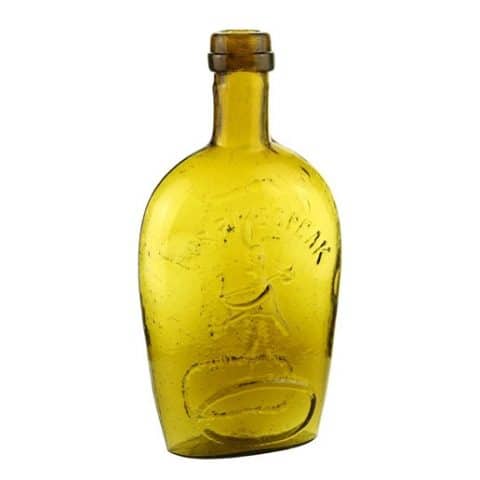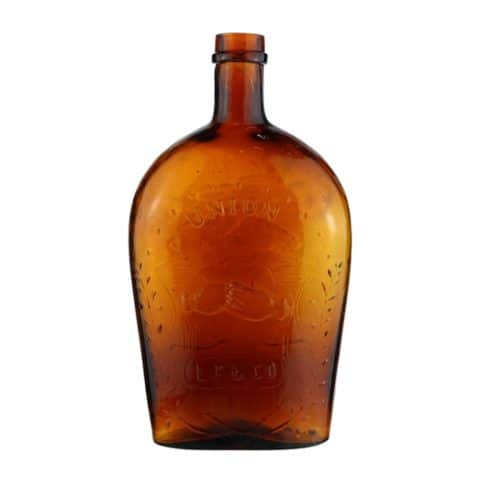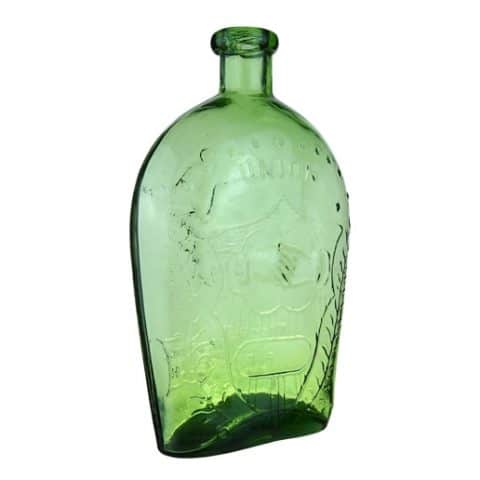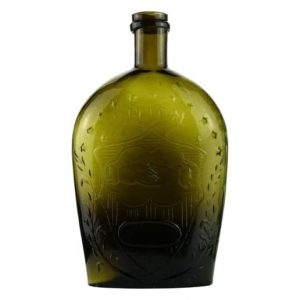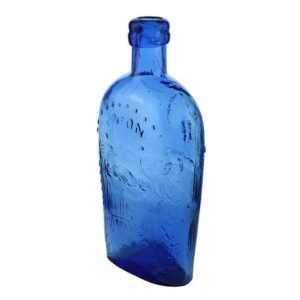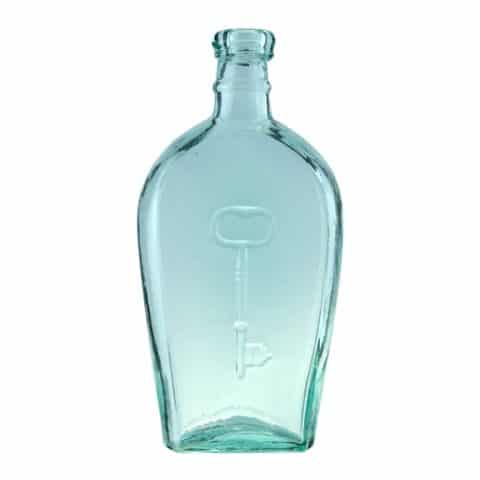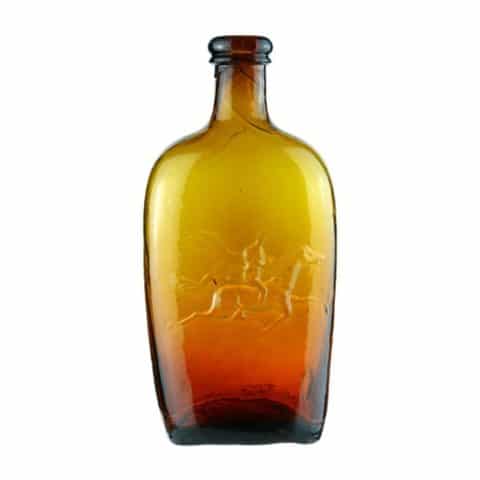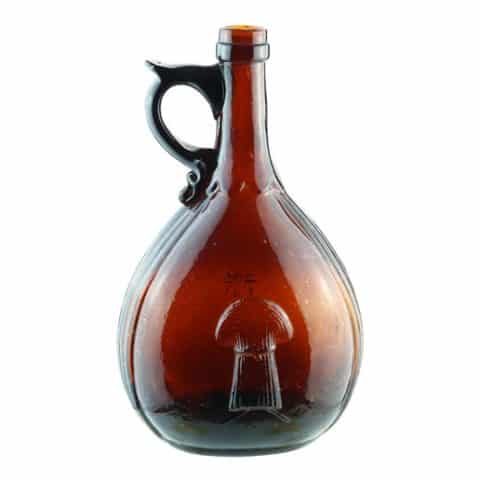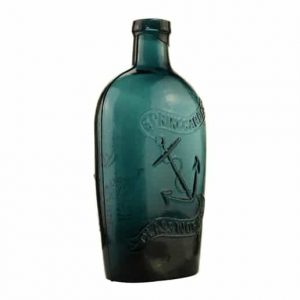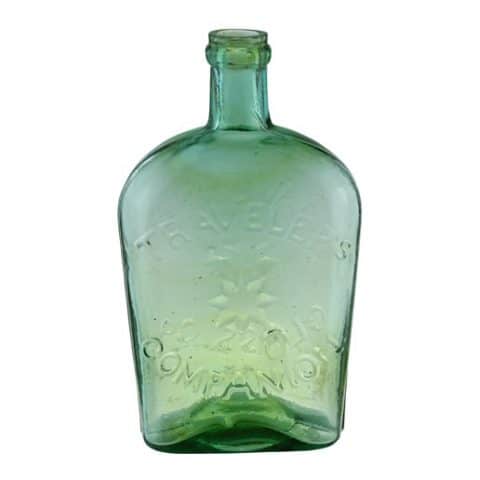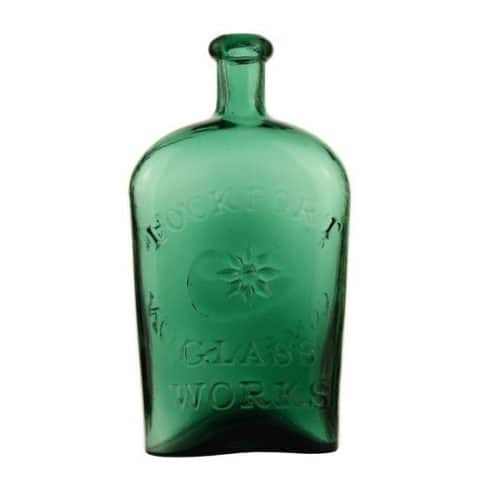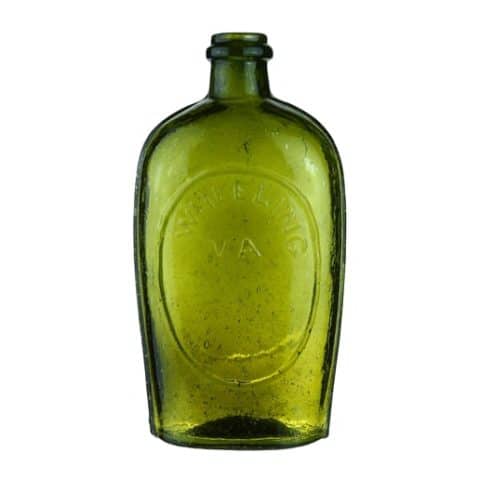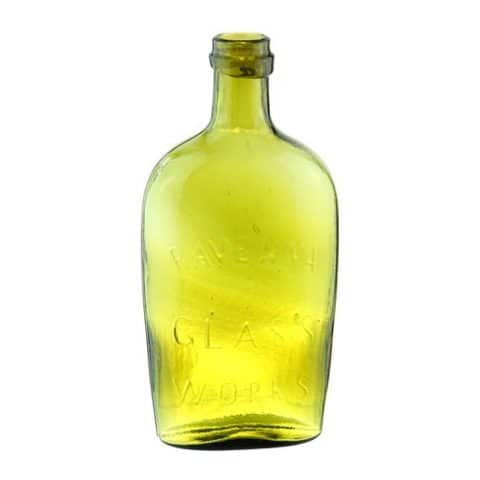GII-55 Eagle – Grapes Flask
GII – 55
Eagle – Grapes Historical Flask
Attributed to Hammonton Glass Works
Winslow, New Jersey
Yellow-Olive Quart
Provenance: Anonymous
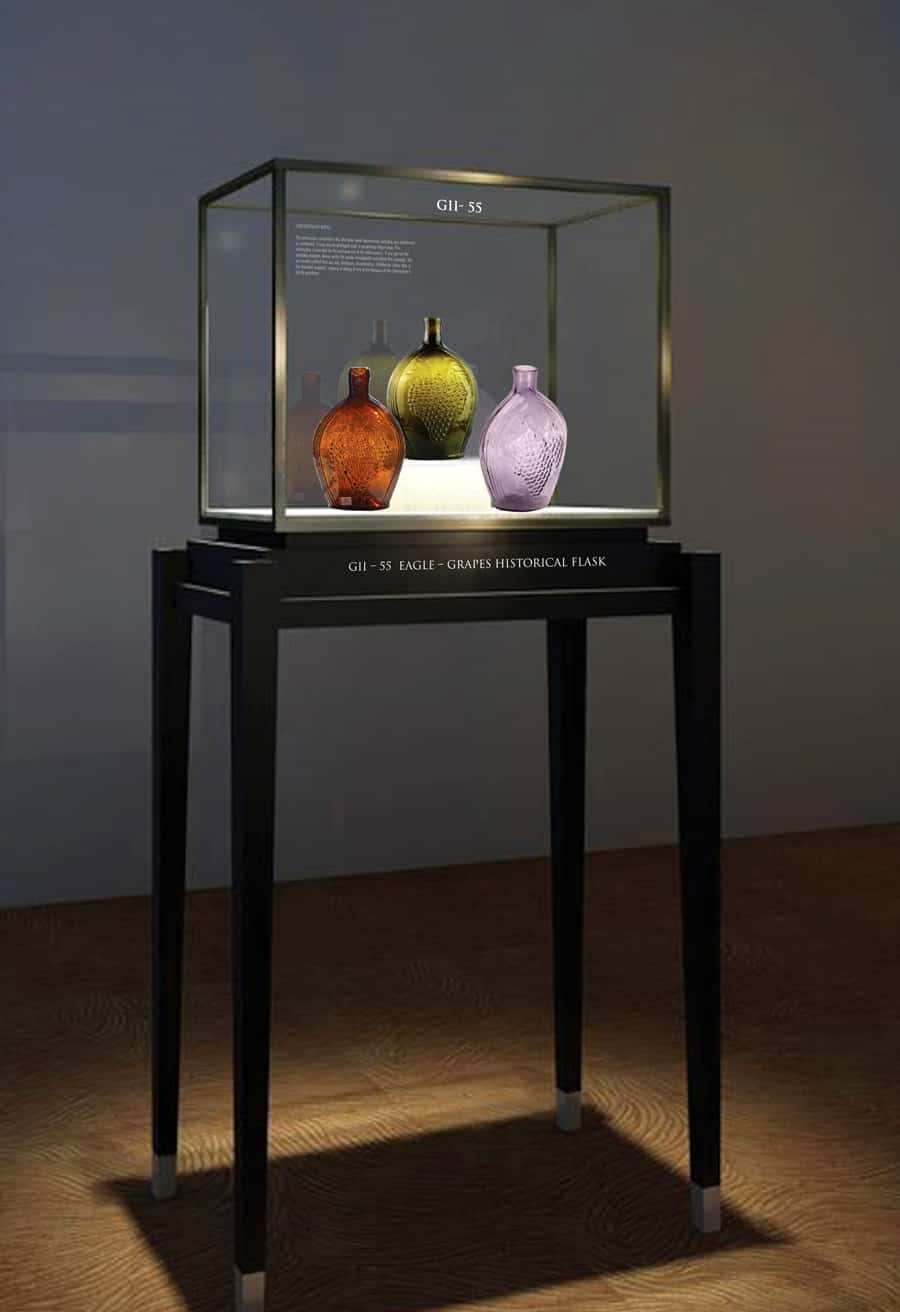
The American eagle was chosen to decorate more flasks than any other single motif in the entire repertoire of flask design elements. It is not hard to understand why, as our young country used the American bald eagle as its emblem to signify strength, power, and sovereignty on the Great Seal of the United States.
The GII-55 Eagle-Grapes flask features a large embossed American eagle facing left on the primary face of the flask. It is set within an oval panel with the wings slightly raised. A shield on the breast contains both vertical and horizontal bars. There are three arrows or thunderbolts in the left talon and an olive branch in the right talon. Above the eagle are thirteen embossed five-pointed stars signifying the thirteen original states in the union.
The United States of America initially consisted of 13 states that had been British colonies until their independence was declared in 1776 and verified by the Treaty of Paris in 1783. This included New Hampshire, Massachusetts, Rhode Island and Providence Plantations, Connecticut, New York, New Jersey, Pennsylvania, Delaware, Maryland, Virginia, North Carolina, South Carolina, and Georgia.
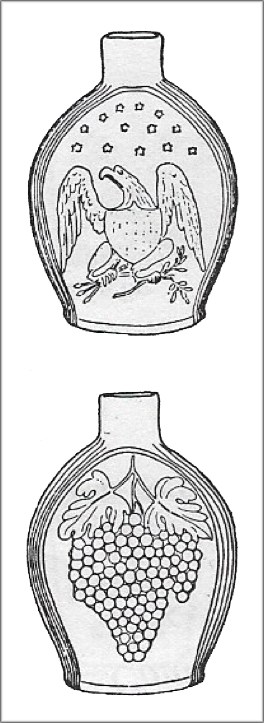
The reverse side of the flask has a large embossed bunch of grapes with a smaller bunch to the right set within a defined oval. Above the grapes is a stem with two large leaves. The vine and grapes motif on flasks symbolized agriculture, commerce, harvesting, wine, and by extension, alcoholic beverages.
See other bottles in our museum embossed with grapes such as Plow’s Sherry Bitters and Catawba Wine Bitters.
The side of the quart flask has fine vertical ribbing and has a plain lip and pontil mark.
Known colors are aqua which is common; light blue-green, which is scarce; light green is noted as comparatively scarce; clear medium green, yellow-green, dark green, and blue-green are rated rare; and gold amber, clear dark amber, and red amber is considered very rare.
The glassworks is possibly Hammonton Glass Works and Coffin & Hay in Winslow, New Jersey. The flask would have been produced from 1836 to 1847.
See other museum flasks attributed to the Hammonton Glass Works such as our GII-49 Eagle-Stag flask and the GII-54 Eagle-Flag “For Our Country” flask.
The Hammonton Glass Works years of Bodine Coffin and Andrew Hay
William Coffin and his sons, especially William, Jr., either founded or were involved in eight New Jersey glasshouses. William Coffin, Sr., and Jonathan Haines erected the family’s first enterprise, a window-glass factory, at Hammonton, New Jersey, in 1817.
In the mid-1820s, William Coffin Sr. was the owner and operating the Hammonton Glass Works when his son William Coffin Jr. left to become a partner in the Millville glassworks in 1828. William Sr. continued to run the works until 1836 when he leased the works to his son Bodine Coffin and his son-in-law Andrew K. Hay. They would operate Coffin & Hay glassworks from January of 1836 until November of 1838 when a disastrous fire destroyed the factory. Subsequently, the Coffin and Hay company was dissolved in November of 1839.
In 1839, Hay then moved to Winslow, New Jersey, and with William Coffin opened the Winslow Glass Works. Thus there were two Coffin & Hay partnerships representing two separate glassworks, but the Hammonton Glass Works ended its Coffin & Hay ownership in late 1838. Andrew Hay probably took the molds that survived the Hammonton fire and used them again at the Winslow plant. These were probably used until the molds wore out. The length of time would have depended on how often the molds were used and how many flasks were produced. Thus, the date range for the Coffin & Hay flasks could have extended from 1836 to 1847 or even later.
Primary Image: The GII-55 Eagle-Grapes flask imaged on location by Alan DeMaison, FOHBC Virtual Museum Midwest Studio
Support: Reference to American Bottles and Flasks and Their Ancestry by Helen McKearin and Kenneth M. Wilson, Crown Publishers Inc., New York, 1978.
Support Images: Auction Lot 41: Eagle – Grapes Historical Flask, possibly Coffin & Hay Manufactory, Winslow, New Jersey, 1836-1847. Bright medium amethyst, sheared mouth – pontil scar, quart; (light exterior high point wear). GII-55 Strong mold impression. Unusual, beautiful and rare color. Fine condition. – Norman Heckler, Norman C. Heckler & Company
Support Images: Auction 72: Eagle – Grapes Historical Flask, possibly Hammonton Glass Works, Winslow, New Jersey, 1840-1860. Medium to deep yellow amber, sheared mouth – pontil scar, quart; (some exterior high point wear, 1 inch fissure at medial ribbing, 1/2 inch fissure near base). GII-55 Beautiful and rare color. Nicely whittled surface. Purchased from Sam Laidacker in 1961, ex George S. McKearin collection, ex Merritt Vanderbilt collection, Clarissa Vanderbilt Dundon collection. – Norman Heckler, Norman C. Heckler & Company
Support Images: Auction Lot 96: Eagle – Grapes Historical Flask, possibly Coffin and Hay Manufactory, Hammonton, New Jersey, 1836-1847. Aquamarine, sheared mouth – pontil scar, quart; (light exterior high point wear, one grape has 1/8 inch surface bruise). GII-55 Appealing form and size. Strong mold impression. – Norman Heckler, Norman C. Heckler & Company
Support Images: Auction Lot 81: Eagle – Grapes Historical Flask, possibly Hammonton Glass Works, Winslow, New Jersey, 1840-1860. Rich yellow-olive with an amber tone, sheared mouth – pontil scar, quart; (light exterior high point wear). GII-55 An impressive flask in a beautiful and unusual color. Fine condition. Ex Robert Mebane collection, Timothy and Christine Hill collection. – Norman Heckler, Norman C. Heckler & Company
Join the FOHBC: The Virtual Museum is a project of the Federation of Historical Bottle Collectors (FOHBC). To become a member.



